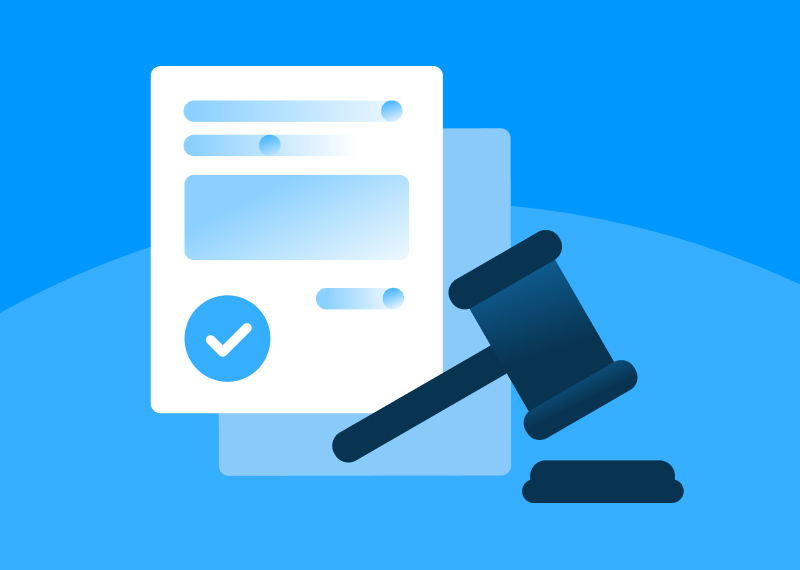Information security standards, like ISO 27001 or NIST, are designed to be abstract to fit various types of organizations, which is generally a benefit. This flexibility lets companies adapt the guidelines to their unique needs, such as different sizes or industries, making them widely useful.
However, this abstract nature can be a drawback too. Without concrete details, it might be hard to know exactly how to implement corresponding controls, leading to a gap between what they aim to achieve and what they can do. This disconnect may confuse, especially for teams with limited security expertise.
ISO 27001 controls can be used during the software development phase to enhance security assurance and compliance.

Aligning software development with ISO 27001 controls provides a structured and systematic approach to security assurance. Moreover, it allows the organization to be compliant with the standard in case of future ISO and SOC-2 certifications and audits.
Why development teams push back on security
Development teams often struggle to translate security objectives into practical, enforceable and testable measures. This creates a gap between security teams (policy enforcers) and developers (implementers).
This pushback likely stems from several factors, as identified through various sources:
- Overhead concerns: Developers may perceive security measures as extra work that slows down development, viewing them as an obstacle to delivering features
- Unclear benefits: The preventive nature of security can make it difficult for developers to see the direct impact of their efforts, like writing secure code or conducting security tests
- Risk misunderstanding: Product teams might not fully grasp the potential consequences of security breaches, leading them to prioritize immediate tasks over security concerns
And here’s some of the strategies to overcome these pushbacks:
- Communicate clearly: Explain "why" security matters to the whole team
- Get everyone involved: Include the product team in security decisions and planning
- Embrace DevSecOps: Integrate security throughout the development lifecycle
- Build mixed teams: Combine security and development expertise for practical solutions
- Automate security: Integrate automated security testing tools into the development workflow to save time and effort
- Cultivate good security habits: Recognize and reward developers who prioritize security
- Knowledge is power: Offer training on secure coding and threat modeling
- Give the right tools: Equip the team with tools that make security easier
To justify the investment in security, organizations should demonstrate its business value — even if the benefits are indirect. The most obvious approach is to quantify the potential costs of security breaches, like financial losses, legal penalties or reputational damage. Then compare them against the cost of preventive measures.
Prioritizing security controls
Security assurance isn’t a one-time task but a continuous journey — much like maintaining a healthy lifestyle. Trying to tackle every security aspect at once can be overwhelming and inefficient.
Instead, a smarter approach is to focus on what delivers the most value with the least effort. It's important to recognize that effort and results are not always equally distributed. By prioritizing straightforward and impactful controls, such as strong password policies or regular software updates, you can address a significant portion of risks early on.
For example, studies suggest that basic controls can prevent up to 80% of common security breaches.
In situations where multiple security controls address the same threat, organizations should opt for the control that is simplest to achieve, provided it maintains an equivalent level of protection. This approach can optimize resource allocation and minimize implementation time.
Embedding security in system design
Security measures are the most effective when integrated into a system’s design and architecture from the outset, rather than added as an afterthought. This holistic approach relies on proven best practices that connect and reinforce each other:

Think like an attacker
To build stronger defenses, adopt the mindset of an attacker.

This perspective reveals weaknesses you might otherwise miss. For instance, if data theft is the attacker’s aim, it sharpens the focus on encryption and access controls. It’s a proactive way to stay ahead of evolving threats.
Security assurance thrives on connection and continuity. Start with high-impact controls to gain quick wins, choose efficient solutions when measures overlap and keep your team informed and engaged.
Integrating security across the product lifecycle
According to the NIST research, fixing security issues during the design phase can be up to 30% cheaper than addressing them after deployment.
The foundation of a secure product begins with clear security requirements that reflect the product’s purpose and the most critical components (authentication and authorization, input and output controls, data protection, cryptography, error handling and others).
Fortunately, developers don’t have to start from scratch. Established frameworks such as the OWASP Secure Coding Practices and the NIST Cybersecurity Framework provide proven guidelines for secure coding and testing.
To effectively weave security assurance into the development process, consider implementing continuous feedback loops. These loops provide developers with real-time feedback on security issues like dependency validation alerts, code review comments and output from automated linters.
Integrate subtle reminders (like security tips in IDEs or pre-commit hooks) to guide engineers toward secure coding practices without interrupting their workflow. Furthermore, a Security Champions Program, where a designated developer on each team acts as a liaison between security and development, can significantly improve communication and collaboration on security matters.
Supplier's risks
The strength of an organization's information security posture is often determined by the security practices of its weakest supplier. ISO 27001 acknowledges this by emphasizing the importance of managing supplier relationships to ensure they don't compromise the organization's overall security.
This is especially applicable when outsourcing.
Third-party teams might not follow the same standards, so it’s vital to extend the organization’s security measures to the partner's team as well. Another way is to select a supplier, who has implemented information security and cybersecurity practices (like Star).
Verification and validation
Verification and validation are inevitable parts of the development lifecycle. The combination of automated and manual activities produces the best possible outcome. Integrated SAST, vulnerability and misconfiguration scanners in the earliest steps of the development pipeline will minimize the risk of potential issues. Meanwhile, dynamic analysis tools keep an eye on the running application.
However, automated tools often cannot find complex business logic flaws, chained exploits, or nuanced security misconfigurations. To achieve a deeper level of assurance, regular penetration testing is crucial. Engaging an independent, third-party organization for penetration testing offers significant additional value.
Appropriate attention is required not only for production but also for development and test environments. Securing each can be tricky, as applying the same strict controls everywhere might be overkill. Instead, smart strategies like obfuscating sensitive data in non-production environments can balance security and practicality, reducing risks without bogging things down.
Change management process
The ISO and other frameworks could provide various insights into security protection. One aspect that’s often forgotten is change management control. Similar to code versioning, appropriate practice may be suitable for support scripts, deployment procedures and other operational documents.
Knowing the current state of critical assets helps teams spot threats and recover quickly if something goes wrong.
Another aspect is the monitoring and alerting systems. Intrusion Detection Systems (IDS) and Security Information Event Management (SIEM) tools can support analyzing system logs and detecting potential breaches.
The human factor
While strong technical controls are fundamental to cybersecurity, human factors remain the weakest link. Organizations must recognize that security isn’t just about tools and frameworks but also about people, behaviors and decision-making.
Equip your employees with the knowledge to identify and respond to common threats like phishing emails, suspicious links, social engineering tactics and malware. Establish and enforce comprehensive security policies that cover areas like password strength, data handling and acceptable device usage.
Security is a shared responsibility, so the ultimate task is to build a culture where everyone understands this. Organizations can empower their people to become a strong line of defense. By raising awareness and providing the right tools, employees can actively contribute to cybersecurity, complementing technological measures to protect sensitive information.








